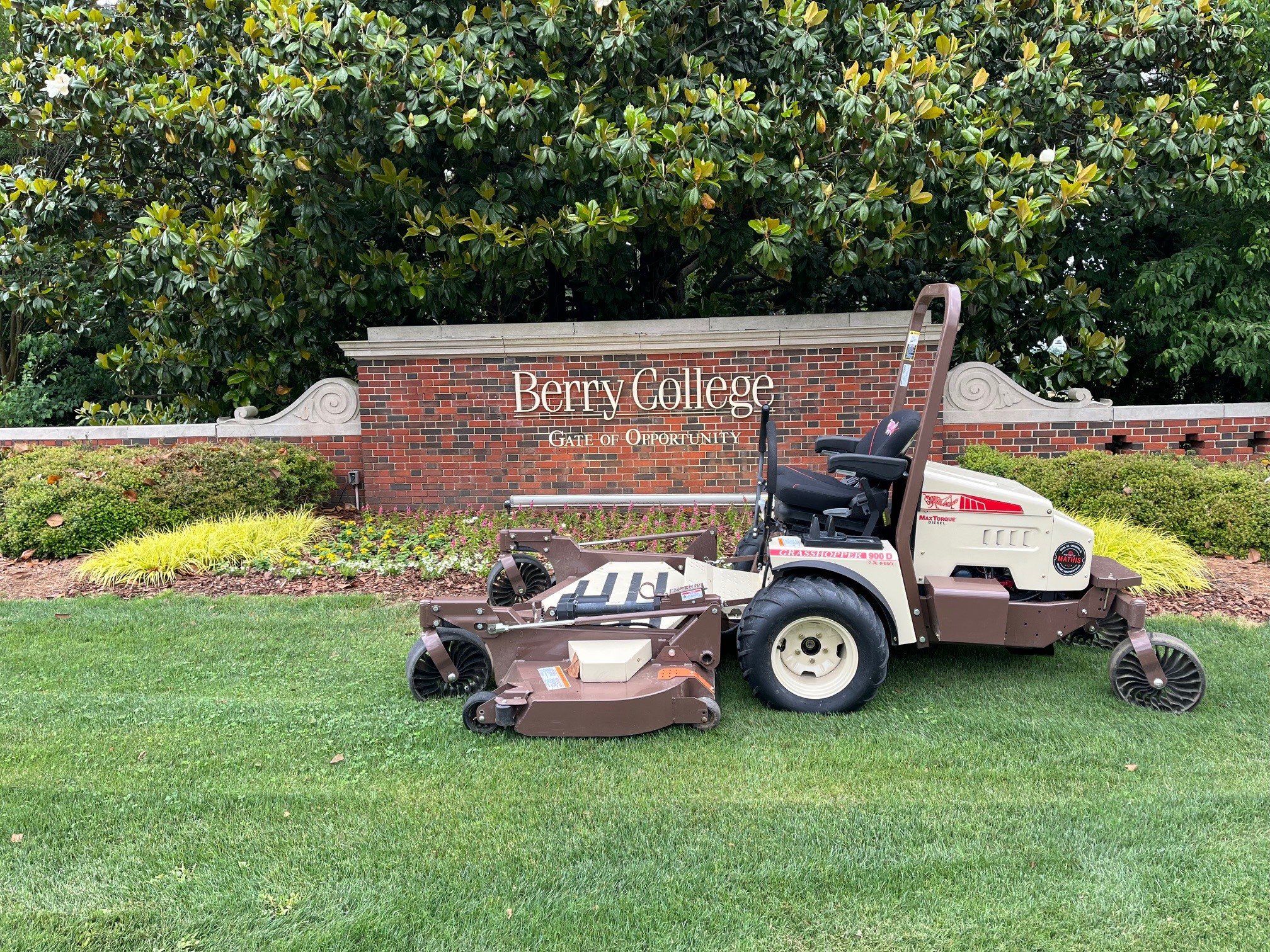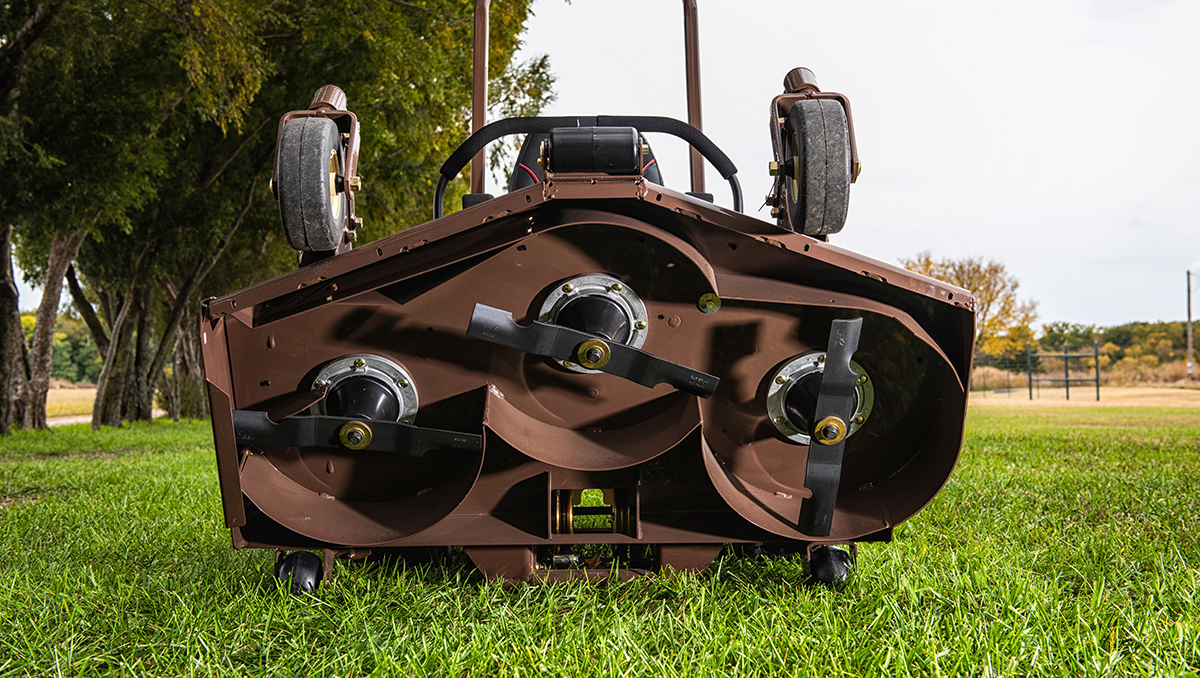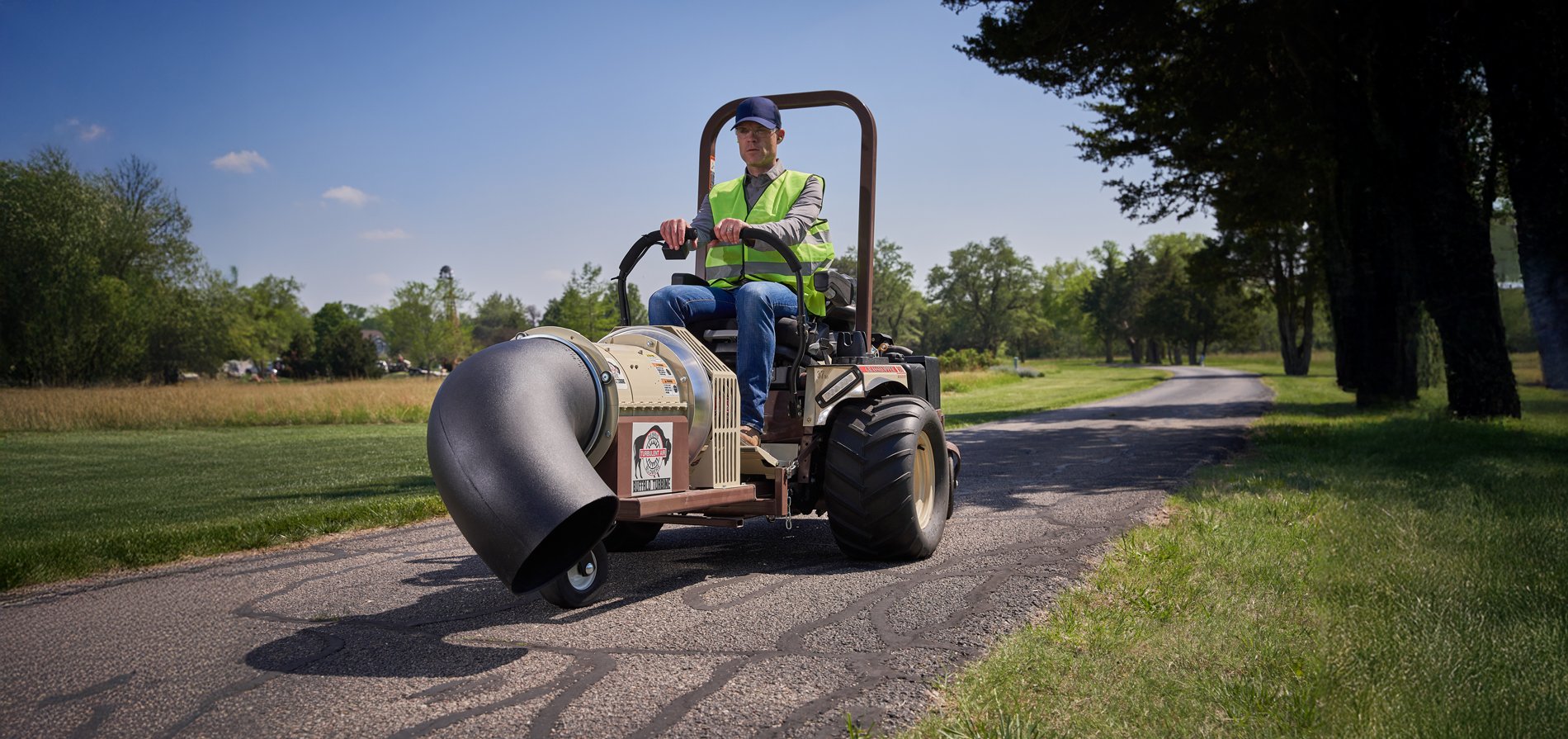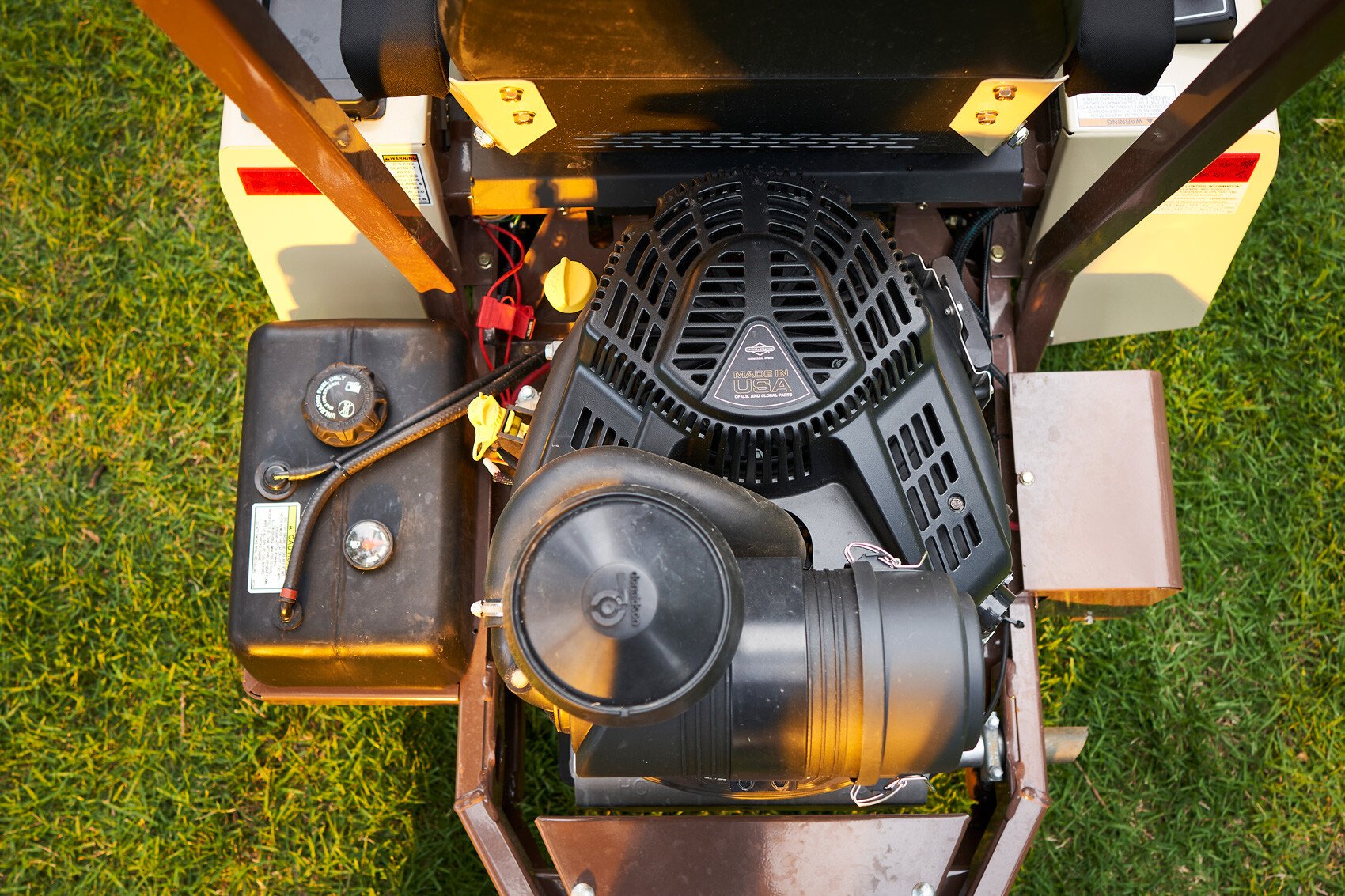If you’re looking for a mower that can easily maneuver around landscape beds and efficiently cut a large property, a zero-turn model checks all the boxes. There’s a reason why the pros run fleets of zero-turn mowers — they turn on a dime, quickly cut large swaths of turf and deliver a quality cut. Homeowners can realize the same benefits with this type of mower.
Before investing in a zero-turn mower, there are seven key factors to consider:
- Engine
- Cutting deck
- Ergonomics
- Quality of cut
- Attachments
- Maintenance
- Warranty
Power Source: Zero-turn Mower Engine Types
The engine is the heart of a zero-turn mower, supplying power to turn the tires, rotate blades and essentially make tall grass short. Zero-turn engines can have one, two or three cylinders, and we recommend a two- or three-cylinder configuration because it will generate enough power to manage rough terrain and cut grass on large properties. Also keep in mind, horsepower and engine size impact the speed and cutting efficiency that a zero-turn mower will deliver.
Advances in engine design and configuration give you more choices when choosing a zero-turn mower: gasoline, diesel or liquified petroleum gas (LP). LP is a gasoline derivative, and both LP and gas-powered engines produce more carbon monoxide emissions than diesel engines.
Aside from emissions, consider fuel economy — and the hassle of taking a break from cutting the lawn to fill the tank. Some homeowners choose diesel because of its fuel efficiency and greater power density. For example, a Grasshopper MaxTorque™ diesel mower consumes half of the fuel and delivers more torque than a comparable-sized gasoline mower.
We recommend talking to your lawn equipment dealer about the pros and cons of gasoline and diesel mower engines so you can make the best choice for your property. Gasoline models tend to be less expensive to purchase, but with special financing programs that dealers offer, you’ll quickly see a return on investment in a diesel engine when factoring in fuel savings and efficiency.
Mower Cutting Deck
Zero-turn mowers are equipped with MidMount or FrontMount cutting decks, and there are advantages to both configurations. A MidMount zero-turn mower’s cutting deck is positioned between the front caster tires and the rear drive tires. Because of the compact configuration, MidMount mowers are ideal for maneuvering in tight spaces. A FrontMount zero-turn cutting deck “reaches” in front of the operator, making it ideal for cutting grass under fence lines, low-hanging tree branches and other hard-to-reach areas. Also, many people with limited storage appreciate how a FrontMount mower deck can be easily flipped up with the PowerFold® feature.
When buying a zero-turn mower, also ask about the construction of the mower deck: How thick is the metal? Is it fabricated or stamped? How large are the spindles? How thick are the blades? The most durable cutting decks are fabricated and reinforced in critical areas for durability, multi-layered, reinforced in critical areas, and feature large spindles with at least five bolts for extra durability and strength to withstand rigorous mowing conditions.
Ergonomics: The Comfort Factor
Comfort affects cut quality and the overall performance of a zero-turn riding mower. A smooth ride gives you more control at faster mowing speeds, and it’s easier on your body when you’re maintaining a large property or navigating uneven terrain. The operator station should include accessible controls so you do not have to overcompensate, twist or turn. Swing-out control levers that automatically return to neutral from forward or reverse provide more responsive steering and are less strenuous than conventional steering systems. Levers should also be adjustable so you can position them comfortably. As for the seat, look for coil-spring suspension, lumbar support and a cooling cushion for maximum comfort. Above all, before buying a zero-turn mower, test drive the models you’re considering at an equipment dealership so you can experience the ride.
Quality Of Cut
While the engine, ergonomics and cutting deck impact a zero-turn mower’s quality of cut, mower blades are also an integral component. Mower blades made from heat-treated steel will deliver cut quality while reducing grass buildup and encouraging airflow to effectively discharge or mulch grass clippings. Deck depth is also a key factor that plays into the quality of cut that a zero-turn mower will accomplish. An extra-deep deck generates a greater volume of airflow, reducing material buildup under the deck and dispersing clippings in a wider pattern. With these main ingredients, you’ll get the manicured results you expect from a zero-turn mower.
Zero-turn Mower Attachments — All The Extras
Your zero-turn mower can do more than cut grass. With implements such as dethatchers, turbine blowers, aerators, dozer blades and snowthrowers, your mower can multitask and provide you with an even greater return on your equipment investment. Plus, attachments save you from purchasing several different machines to perform various outdoor tasks. MidMount zero-turn mowers offer fewer attachment options than front-mount mowers, however, you can select from basics like an edger, sprayer, dethatcher and PowerVac™ Collection System. FrontMount mowers can be outfitted with a wide range of year-round, all-season implements.
Mower Maintenance
You have to maintain your lawn, so you don’t want to spend a lot of time maintaining your zero-turn mower. That’s why asking about regular maintenance requirements and how easy it is to service your mower before you make the purchase is so important. How accessible is the engine? How many lubrication points will require greasing on a regular basis? (Grasshopper MidMount models only have five.) Will the deck fold up for simple blade sharpening and so you can easily clean out debris? This feature is standard on Grasshopper FrontMount mowers. Keep in mind, when you purchase a mower from a servicing dealer, you have a go-to resource for all maintenance needs. Check out our convenient maintenance tip sheet for some guidance.
What's The Zero-turn Mower Warranty?
Ask your equipment dealer about the mower warranty and the number of years (and runtime/hours) of coverage. Are parts and labor covered? What is not included in the warranty? A solid warranty speaks to a manufacturer’s confidence in its products. You’ll find that less rugged zero-turn mowers that are not built to last like commercial-quality equipment fall short in the warranty department. Look for a warranty that offers peace of mind and is a statement about the return on investment you will gain.
The Grasshopper Advantage
We recommend visiting a servicing dealer to test drive a zero-turn mower to feel how it performs. Also, ask the dealer about financing offers that make buying a zero-turn mower economical for your budget.
Interested in some mowing tips from the pros at Grasshopper? Check out our library of how-to videos, or sign up for our newsletter. Thinking about a new mower? Our team can help you choose the best model for your needs.





